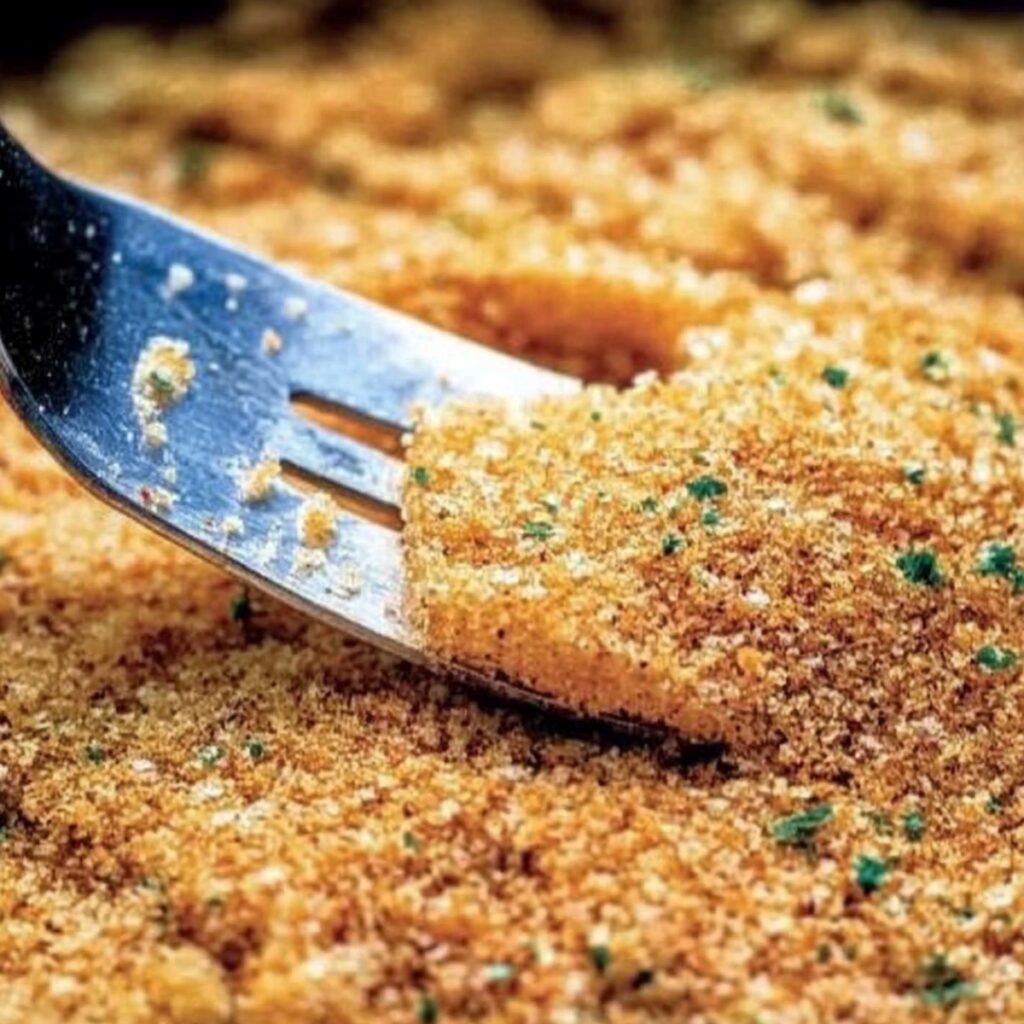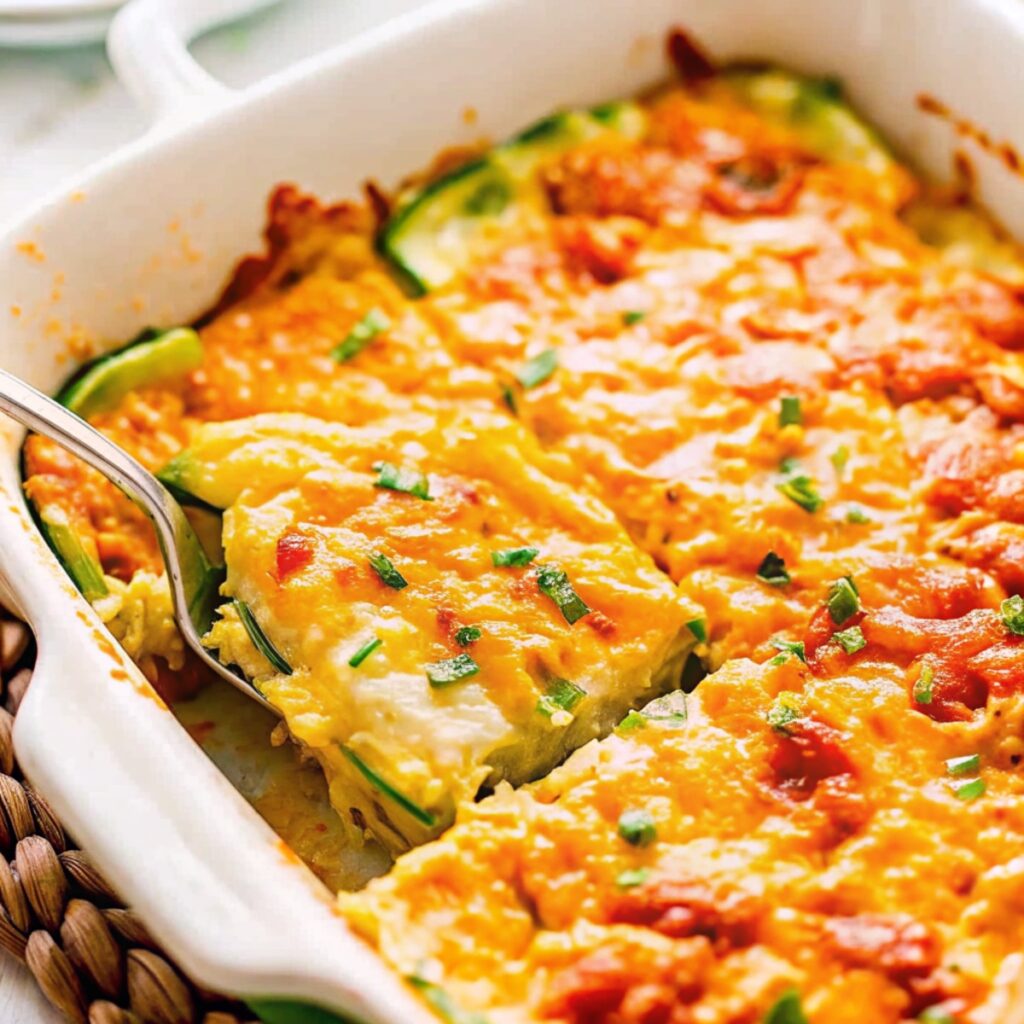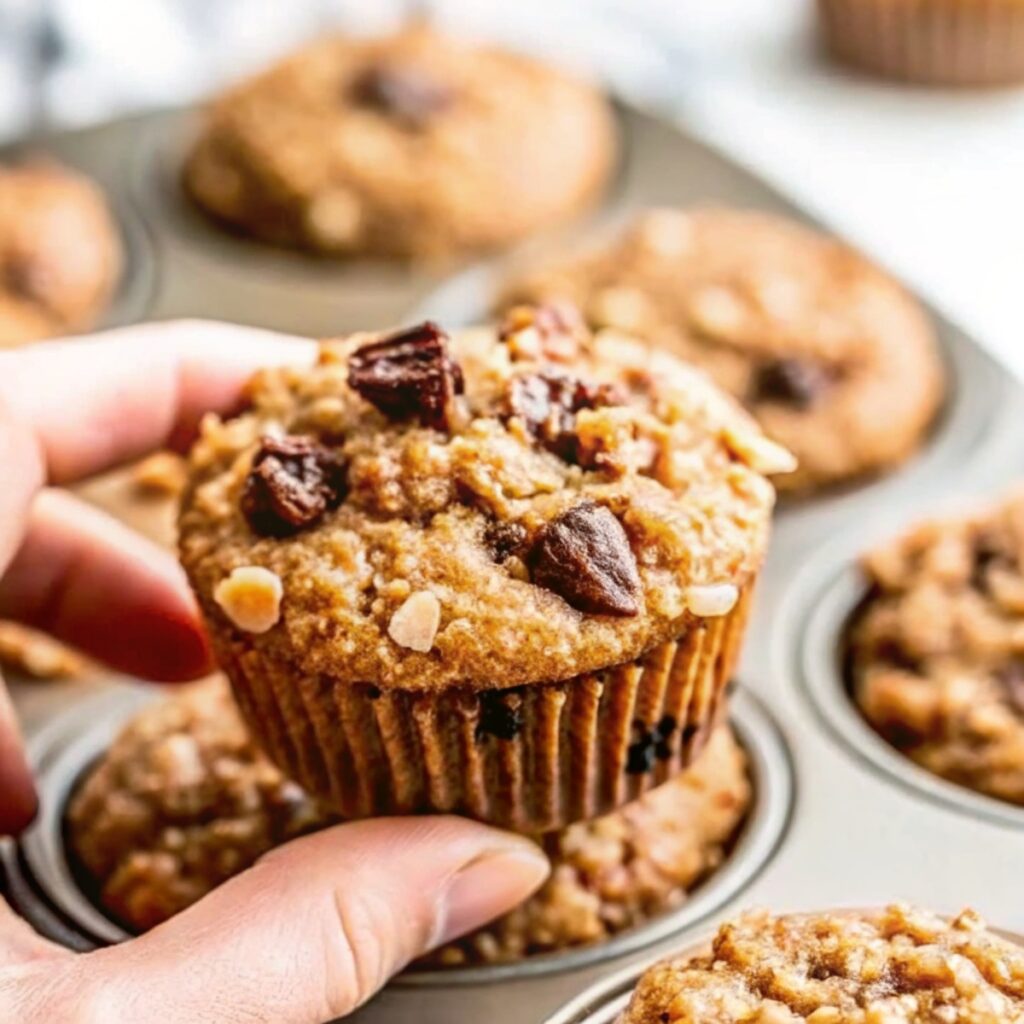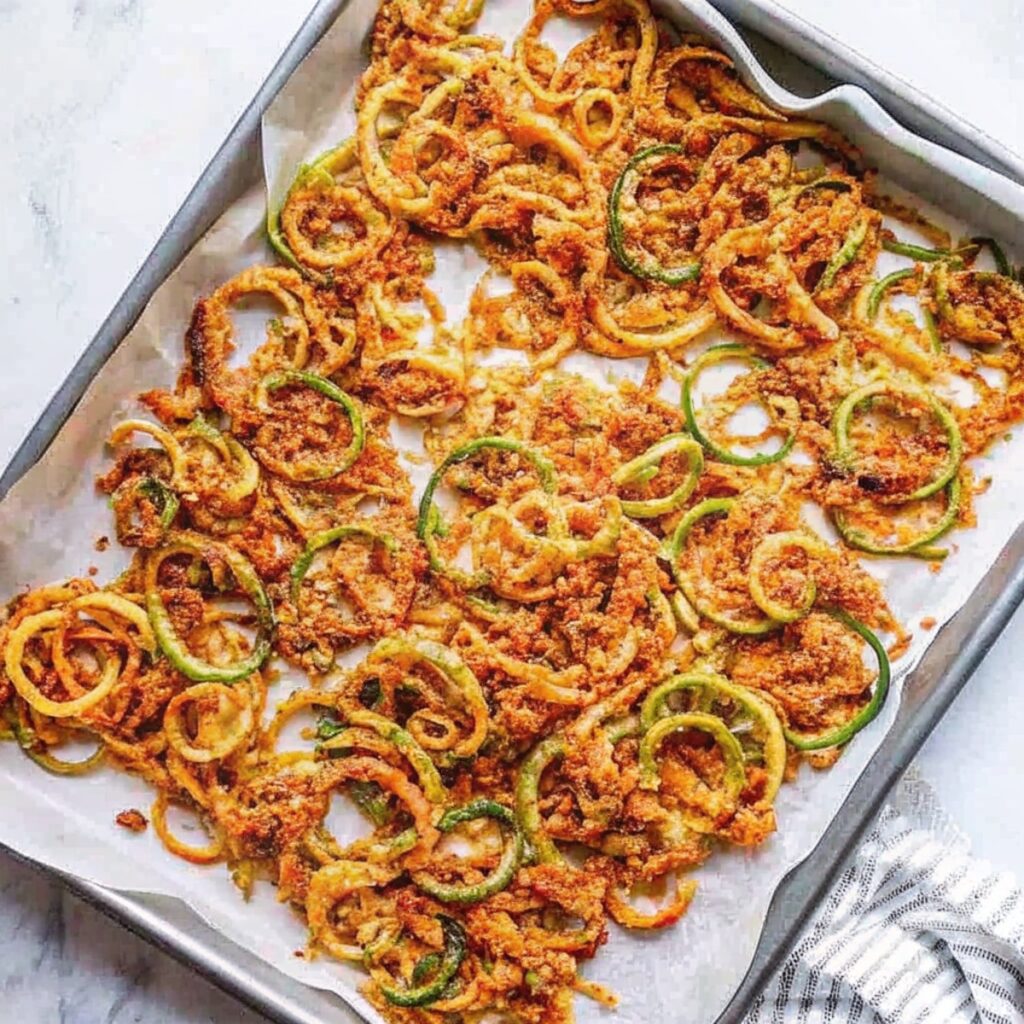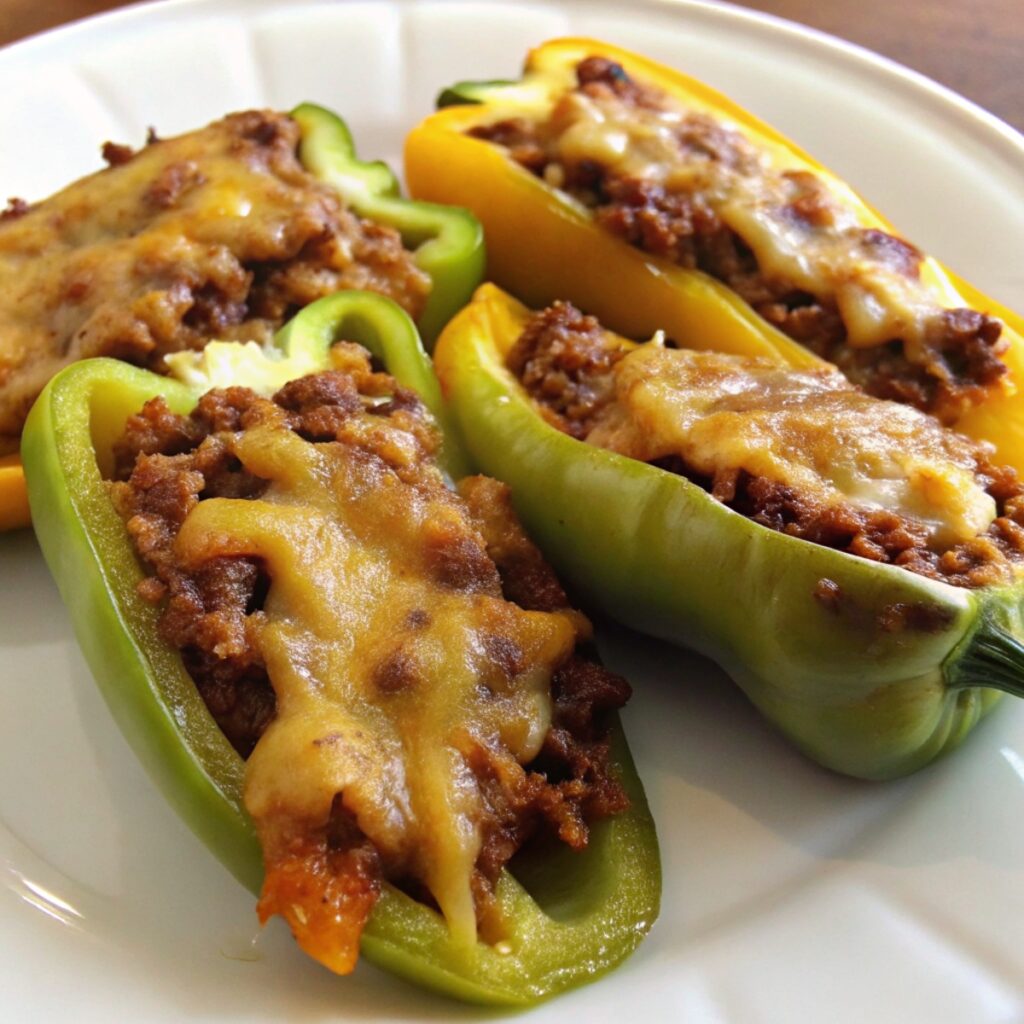There’s something magical about opening a jar of homemade toasted bread crumbs: the aroma is toasty, nutty, and unmistakably fresh. Every culture has its own way of turning leftover bread into something exceptional, but I’m convinced these Best Toasted Bread Crumbs are a quiet hero of the kitchen. While they might seem like a humble staple, they elevate nearly any dish they touch — from a bubbling baked pasta in Italy to a crisp green salad in France or a golden-topped casserole at home.
This recipe is all about giving bread a glorious second act. I adore using simple white bread as the foundation, transforming its soft, pillowy texture into something with crunch and character. The olive oil, with its fruity undertone, mingles with just-browned garlic, heightening every breadcrumb. Then comes the star: Romano cheese, sharp and robust, melting ever so slightly into the warm crumbs and lending a briny, savory edge that no store-bought version can match. That finishing shower of fresh, grassy parsley? It brightens everything and ties these flavors together, making these toasted bread crumbs truly special.
Every time I make this recipe, I’m reminded of the beauty in simplicity: a few fresh ingredients, a bit of patience, and a respect for letting each component shine. There’s something deeply satisfying about watching stale bread transform into crisp morsels of flavor, ready to add texture and soul to whatever you’re cooking. In these peak summer weeks — when tomatoes are bursting, basil is abundant, and garden suppers are frequent — I find myself reaching for these bread crumbs to finish off bruschetta, tomato salads, or even grilled zucchini. The recipe’s core ingredients come together effortlessly, but the result tastes like so much more.
If you’re a traveler at heart, you’ll recognize the universal appeal in this recipe. It’s a nod to the Italian pangrattato, a cousin to Provençal “chapelure” and the Japanese “panko,” but with its own personality. No matter where you are, these best toasted bread crumbs bring a sense of home, the comfort of tradition, and the thrill of a topping that crackles under your fork. There’s genuine joy in knowing you made something this delicious, from scratch, with just a handful of ingredients. So let’s celebrate stale bread, give cheese a starring role, and enjoy the crunch that makes every dish extraordinary.
Elegant Simplicity: Best Toasted Bread Crumb
Click here to get printable version
Gathering Your Ingredients
- 4 white bread slices, crusts removed
- 4 teaspoons olive oil
- 1 teaspoon garlic, finely chopped
- 2 tablespoons Romano cheese, grated
- 3 teaspoons fresh flat-leaf parsley, chopped
How to Make It Happen
- Place the bread slices on a cooling rack and leave them uncovered overnight. This step dries them out fully, ensuring crisp, even crumbs.
- Once the bread is completely dry, break it into pieces and pulse in a food processor until you achieve fine crumbs. Avoid over-processing; you want tidy, uniform bits.
- Heat a large sauté pan over medium-high. Pour in the olive oil and add the chopped garlic, sautéing until the garlic is just golden — don’t let it burn, or the flavor will turn bitter.
- Add the bread crumbs, reduce heat to medium, and stir constantly. Toast for about 10 minutes, or until all the crumbs are evenly golden. Keep them moving to prevent scorching.
- Transfer the toasted crumbs to a plate and let them cool to room temperature. They should feel crisp and dry.
- Combine the cooled crumbs with grated Romano cheese and fresh parsley in a bowl. Mix thoroughly to distribute the flavors evenly.
- Store your best toasted bread crumbs in an airtight container in a cool, dry spot. They’ll keep fresh for up to a week, ready to sprinkle over pasta, salads, or roasted vegetables.
Minimalist Ingredient Substitutions
If you’re short on Romano cheese, Parmesan is a worthy substitute, bringing its nutty saltiness to the mix. Whole grain or sourdough bread offers deeper flavor and texture, while gluten-free breads make the recipe accessible to all. For a different herbal lift, try finely chopped chives or basil instead of parsley. Don’t skip the olive oil — it’s essential for that golden crunch, but you can use a light neutral oil if needed. Always avoid flavored oils, as they can overpower the delicate balance of the crumbs.
Plating Ideas for Elegant Simplicity
These bread crumbs are all about understated elegance. Scatter a generous handful on top of baked macaroni and cheese, allowing the heat to melt the Romano just enough for a savory crust. Sprinkle over a tomato and mozzarella salad for crunch and contrast. For hors d’oeuvres, roll goat cheese balls in the crumbs for a sophisticated bite. Or, serve them in a small bowl alongside olive oil and let guests swirl roasted vegetables or crusty bread through them — a simple, yet elevated table touch.
How to Store with Zero Waste in Mind
Let your bread crumbs cool completely before storing to prevent unwanted moisture build-up. Use a glass jar or a well-sealed container, and keep them in the pantry away from direct sunlight. If you don’t use them all within a week, freeze any leftovers in a zip-top bag — they’ll keep for up to a month and refresh beautifully in a quick skillet re-toast. Label your container with the date to avoid forgotten crumbs at the back of the shelf.
Cooking Tips to Let Core Flavors Shine
The key to coaxing out the best flavor is patience. Don’t rush the drying or toasting process: thoroughly dried bread yields lighter, crispier crumbs. When sautéing the garlic, watch carefully; remove from heat as soon as it turns golden. The Romano cheese should be freshly grated for maximum aroma and meltability. Finally, use fresh parsley for brightness — dried versions lack the same vibrancy.
Minimalist Seasonal Twists
These bread crumbs adapt beautifully with the seasons. In summer, add a pinch of lemon zest for a sunny lift, or blend in a teaspoon of finely minced fresh basil. During autumn, swap the parsley for sage and use a heartier sourdough. In winter, a touch of crushed red pepper or rosemary adds warmth. Spring calls for extra green: try mixing in chive blossoms or tarragon. Let what’s fresh and local guide your flavor accents.
Your Questions Answered
Can I make these bread crumbs without a food processor?
Absolutely! Simply tear the dried bread into small pieces and place them in a sturdy plastic bag. Use a rolling pin or the bottom of a heavy pan to crush the bread into fine crumbs. It may take a bit more effort, but you’ll still achieve a satisfying texture. Be patient and check for any large pieces that might remain.
How do I prevent the bread crumbs from absorbing too much oil?
It’s important to add the crumbs to a hot pan and stir them constantly over medium heat. Use only the recommended amount of olive oil and avoid letting the bread crumbs sit in one spot for too long. This technique ensures each crumb is evenly coated and toasted, not greasy.
Why do my bread crumbs sometimes turn out chewy instead of crisp?
This usually happens if the bread wasn’t thoroughly dried before processing or if the crumbs didn’t cool completely after toasting. Ensure the bread is left out overnight and that the crumbs are spread out to cool so they dry out fully. Moisture is the main enemy of crunch!
Can I use pre-sliced sandwich bread, or does artisan bread work better?
Both can be used, but artisan bread may lend a deeper flavor and more varied texture, while pre-sliced sandwich bread yields uniform and classic results. For the best texture, be sure to remove crusts regardless of the bread type, as they don’t toast as evenly.
Is there a way to make these bread crumbs in advance for events or holidays?
Yes, you can make a large batch, cool them thoroughly, and freeze in an airtight container for up to a month. When you’re ready to use, re-toast them in a skillet over medium heat for a minute or two to restore their fresh crunch. Don’t add cheese or herbs until after reheating for best flavor.
What can I do if my garlic burns during toasting?
If your garlic becomes too dark or bitter, it’s best to start over with fresh oil and garlic. Burnt garlic imparts a strong, unpleasant taste that can overwhelm the delicate flavor of the bread crumbs. Next time, lower the heat slightly and watch closely so you catch the garlic at the perfect golden moment.

Best Toasted Bread Crumb
Equipment
- food processor
- sauté pan
- cooling rack
Ingredients
- 4 slices white bread crusts removed
- 4 teaspoons olive oil
- 1 teaspoon garlic finely chopped
- 2 tablespoons Romano cheese grated
- 3 teaspoons fresh flat-leaf parsley chopped
Instructions
- Start by preparing your bread. Place the slices on a cooling rack and leave them out overnight to thoroughly dry out.
- Once dry, pulse the bread in a food processor until you achieve fine crumbs.
- Heat a large sauté pan over medium-high heat. Add the olive oil and garlic, cooking this mixture until the garlic is a light golden color.
- Introduce the bread crumbs into the pan, reducing the heat to medium. Stir frequently, cooking until the crumbs are evenly toasted and golden, about 10 minutes.
- Transfer the toasted crumbs to a plate and allow them to cool to room temperature.
- In a separate bowl, combine the cooled crumbs with the grated Romano cheese and chopped parsley, mixing well to distribute the flavors.
- Store the home-made toasted bread crumbs in an airtight container in a cool and dry location. They remain fresh for over a week, perfect for enhancing pastas or salads!
